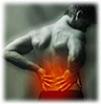Manipulation Under Anesthesia (MUA) is by far one of the most exciting and effective methods for reducing and/or eliminating unresolving pain and ADL deficits being performed today. MUA can be effective for the treatment of chronic and recurrent back pain, fibroblastic proliferative changes, chronic muscle spasm, failed back syndromes, herniated discs and unresolved headaches of non-organic origin. The procedure is within nationally published practice guidelines and parameters of care.
MUA expands the primary role of the M.D., D.O., D.C., D.P.M. and other PM&R physicians who specialize in chronic pain treatment and physical medicine. The techniques enable the physician to provide a higher level of care, as well as an alternative to surgery to their patients.
When proper treatment protocols are followed, MUA consistently generates life changing results for carefully selected patients.
Manipulation Under Anesthesia, or MUA, is a highly specialized, non-invasive stretching technique for patients who have minimally responded to or failed to respond to conservative care. Manipulation Under Anesthesia works by breaking up adhesions and scar tissue which has formed in injured muscles or joints in order to restore range of motion while the patient is maintained in a safe state of sedation.

Manipulation under anesthesia uses a combination of specific short lever manipulations, passive stretches and specific articular and postural kinesthetic maneuvers in order to break up fibrous adhesions and scar tissue around the spine, surrounding tissue and other affected joints and muscles.
The manipulation procedures can be offered in any of the following ways:
The treatment is performed in a hospital or ambulatory surgery center (ASC) by licensed physicians with specialized training and certification specifically for the procedure. A team approach is required to have safe and successful results.
The team includes the anesthesiologist, the primary physician/surgeon/chiropractor who performs the manipulation, and the co-attending physician, also an M.D., Osteopathic or Chiropractic physician certified in Manipulation Under Anesthesia.
The procedure is most commonly performed in an ambulatory surgery center or hospital.
The combination of manipulation and anesthesia is not new or experimental, this treatment has been part of the manual medical arena for more than 90 years. Manipulation Under Anesthesia is an established medical procedure with designated CPT Codes. This is noted in the American Medical Association’s Current Procedural Terminology Publication.